ORRI Comparative Analysis and Working Interests
In the oil and gas industry, investors often encounter different types of interests when evaluating opportunities. Among the most common are Overriding Royalty Interests (ORRI) and Working Interests (WI). While both offer the potential for profits from resource extraction, they differ significantly in terms of financial obligations, risk exposure, and involvement in operations.
Understanding the nuances between ORRI and Working Interests is crucial for making informed decisions in this complex sector. This article provides an in-depth comparative analysis of ORRI and Working Interests, examining their core characteristics, financial implications, risks, and benefits to help potential investors choose the best option for their investment strategy.
Introduction to Overriding Royalty Interests
Overriding Royalty Interest (ORRI) is a non-operating interest in the production of oil, gas, or other minerals. Holders of ORRI receive a percentage of the revenue generated from resource extraction but do not bear any costs associated with drilling, production, or maintenance of the operations.
The key feature of ORRI is that it exists only for the duration of the lease agreement on which it is based. When the lease expires or terminates, the ORRI also ceases to exist. This type of interest is typically for individuals or entities that do not want to be directly in the operational aspects of resource extraction but still want to benefit from the potential revenue stream generated by the production.
ORRI is appealing to many investors because it provides a passive income stream without the financial burden of operational costs or risks associated with the drilling and production process.
Introduction to Working Interests
Working Interests (WI), in contrast, represent a direct ownership interest in the exploration and production of oil, gas, or other minerals. Unlike ORRI holders, Working Interest owners actively participate in the operations and are responsible for a proportional share of the costs associated with the extraction process, including drilling, production, and maintenance.
Working Interest owners have more control over decisions related to the exploration and development of the resource. This higher level of involvement comes with the potential for larger financial rewards but also exposes WI holders to greater financial risks, particularly in the case of unsuccessful wells or unforeseen operational challenges.
Investors who hold Working Interests must be prepared for a hands-on approach, managing both the benefits and risks that come with a direct stake in the production process.
Financial Implications for ORRI Holders
The financial structure of ORRI is relatively straightforward. ORRI holders receive a percentage of the revenue generated from the production of oil, gas, or other minerals. This percentage is typically negotiated as part of the lease agreement between the ORRI holder and the lessee (often a company involved in the extraction of the resources).
The key financial advantage of ORRI is that it allows holders to earn a royalty income without any responsibility for operational costs. Unlike Working Interest owners, who must cover a proportional share of the expenses related to extraction, ORRI holders are insulated from these costs. This includes the significant expenses involved in drilling, maintaining, and operating wells or other extraction equipment.
However, while ORRI holders are shielded from direct costs, their income depends entirely on the production levels and market prices for the extracted resources. If the resource is not successfully extracted, or if market prices decline, ORRI holders may see a reduction in income. Additionally, since ORRI is tied to the duration of the lease, the expiration of the lease can mean the end of the income stream, leaving the holder without further earnings unless they acquire another interest.
Financial Implications for Working Interest Owners
The financial implications for Working Interest owners are more complex. As active participants in the resource extraction process, WI holders are responsible for a share of the costs associated with all phases of the operation, including exploration, drilling, production, and well maintenance. This financial responsibility includes covering costs related to:
- Drilling and Exploration: Costs associated with locating and drilling wells, which can be substantial if the well is exploratory and unproven.
- Operating Costs: Ongoing expenses related to maintaining the wells and ensuring that production is sustained at an optimal level.
- Taxes and Regulatory Fees: WI owners may also be responsible for paying severance taxes, property taxes, and any fees associated with environmental regulations or permits.
In exchange for these financial obligations, Working Interest owners typically receive a larger share of the profits from the production of the resource. WI owners are entitled to a proportional share of the revenue, after operational expenses and other deductions are made.
While the potential financial rewards are greater for WI owners, the risks are also higher. If the operation incurs unexpected expenses, such as equipment failures or environmental remediation costs, WI owners must cover their share of these expenses. Furthermore, if the well is unproductive or market prices drop, WI owners may face a situation where their income does not offset their costs, resulting in a financial loss.
Risk Exposure for ORRI Holders
One of the primary benefits of holding an ORRI is the limited exposure to risk. Since ORRI holders do not bear any of the operational costs or liabilities associated with resource extraction, they are insulated from many of the financial risks that affect Working Interest owners. This includes risks related to:
- Cost Overruns: ORRI holders are not responsible for cost overruns or increased expenses associated with drilling, production, or environmental compliance.
- Unproductive Wells: If a well turns out to be unproductive or yields less than expected, ORRI holders still receive a percentage of the revenue from whatever production does occur. However, they are not liable for the costs of the failed well.
- Environmental and Legal Liabilities: ORRI holders are not responsible for environmental remediation costs or legal liabilities that may arise from the extraction process. These obligations fall on the operators and Working Interest owners.
ORRI holders have protection from these financial and legal risks, they are still exposed to market risks. Fluctuations in commodity prices can directly impact the revenue they receive from their interest. If the price of oil, gas, or other minerals falls, the royalty income for ORRI holders will decrease accordingly.
Risk Exposure for Working Interest Owners – ORRI Comparative Analysis
Working Interest ownership involves a much higher level of risk compared to ORRI. Since WI owners have roles in the operations, they are part of a wide range of financial, operational, and legal risks, including:
- Operational Risk: WI owners are responsible for their share of the costs associated with drilling and maintaining wells. If the well fails or requires significant repairs, the costs can quickly escalate. WI owners must cover their portion of these expenses, even if the well is unproductive.
- Environmental Liability: WI owners are potentially liable for any environmental damage that results from the extraction process. This includes the cost of cleaning up spills, remediating land, or complying with government regulations related to environmental protection.
- Commodity Price Risk: Like ORRI holders, WI owners are also subject to market risks. A decline in the price of oil, gas, or minerals can significantly reduce revenue. However, unlike ORRI holders, WI owners must continue to cover their share of the operational expenses, even if the well is not generating sufficient income to offset costs.
- Financial Risk: WI owners may also face financial risks related to the financing of their investment. If they take out loans or incur debt to fund their share of the operating costs, they must ensure that the income generated from the well is sufficient to cover these obligations.
Because of the higher level of risk associated with WI ownership, investors need to carefully assess their financial capacity and risk tolerance before committing to this type of interest.
Tax Implications for ORRI Holders
The tax treatment of ORRI income is distinct from that of Working Interests, and understanding these differences is crucial for maximizing tax benefits and ensuring compliance with tax regulations.
ORRI income is generally a passive income and is subject to federal and state taxes as royalty income. However, ORRI holders can take advantage of several tax deductions that help reduce their taxable income, including:
- Depletion Deductions: ORRI holders may be eligible for depletion deductions, which allow them to recover the cost associated with the depletion of the resource over time. Both cost depletion and percentage depletion methods are available, depending on the specific circumstances of the ORRI.
- Legal and Professional Fees: Fees related to the management of the ORRI, such as legal services or tax preparation costs, may be deductible as ordinary and necessary business expenses.
Because ORRI holders are not responsible for operational costs, they are not eligible to deduct these expenses. However, the depletion deduction can provide significant tax benefits, particularly for long-term ORRI holders who earn substantial royalty income.
Tax Implications for Working Interest Owners
The tax implications for Working Interest owners are more complex due to their active involvement in the production process. WI owners can take advantage of a broader range of tax deductions, but they are also subject to more stringent tax rules.
Key tax deductions available to WI owners include:
- Operational Cost Deductions: WI owners can deduct their share of the expenses related to drilling, production, and maintenance of the wells. These deductions can offset the taxable income generated by the resource production.
- Depreciation and Depletion Deductions: WI owners may also be eligible for depreciation deductions on equipment and infrastructure used in the production process, as well as depletion deductions for the depletion of the mineral resource.
- Interest Expense Deductions: If WI owners take out loans to finance their share of the operational costs, the interest paid on these loans may be deductible as a business expense.
The combination of operational cost deductions, depreciation, and depletion can result in significant tax savings for WI owners, especially if the production is successful and generates a high level of income. However, the complexity of the tax rules means that WI owners should work closely with tax professionals to ensure they are maximizing their deductions while remaining compliant with tax regulations.
Control and Decision-Making Authority in ORRI Comparative Analysis
One of the key differences between ORRI and Working Interests is the level of control and decision-making authority that the holder has over the resource extraction process. ORRI holders have no direct control over the operations. They do not participate in decisions related to drilling, production, or resource management.
This lack of control can be both an advantage and a disadvantage, depending on the perspective of the investor. On the one hand, ORRI holders are not accountable for the responsibilities and complexities of managing the operations. It is allowing them to earn passive income without the need for active involvement. On the other hand, they have no say in the operational decisions that may impact the success or profitability of the extraction process.
Control and Decision-Making Authority in Working Interest -ORRI Comparative Analysis
Working Interest owners, in contrast, have a direct say in the operations of the resource extraction. Depending on the ownership structure and the terms of the operating agreement, WI owners may have the ability to vote on key decisions related to drilling locations, production schedules, and resource management strategies.
This level of control allows WI owners to influence the direction of the operations and potentially increase the profitability of the well. However, it also comes with greater responsibility and the need for technical knowledge and expertise in the oil and gas industry. WI owners must be ready to make decisions and manage the operational risks with resource extraction.
The choice between Overriding Royalty Interests (ORRI) and Working Interests (WI) depends on an investor’s risk tolerance, financial goals, and desired level of involvement in the resource extraction process. ORRI offers a passive income stream with limited risk and no operational responsibilities, making it an attractive option for investors who want to avoid the complexities of managing a well. However, the potential financial rewards are typically lower than those available to WI owners.
Working Interests on ORRI Comparative Analysis
Working Interests ORRI Comparative Analysis, on the other hand, provides the opportunity for greater financial returns, but they come with higher risks, including operational, environmental, and financial liabilities. WI owners must actively participate in the operations and bear the costs associated with production, making this option suitable for investors who have a higher risk tolerance and a deeper understanding of the industry.
Both ORRI and WI have their unique advantages and disadvantages, and the best choice depends on the specific circumstances of the investor and the investment opportunity. By carefully considering the financial implications, risks, and tax benefits of each type of interest, investors can make informed decisions that align with their long-term financial goals.
Do you have further questions related to ORRI Comparative Analysis? Feel free to reach out to us here.

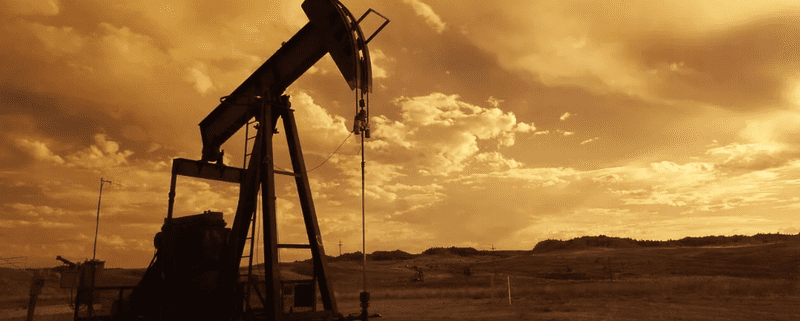

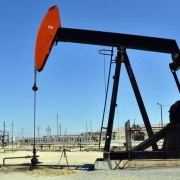
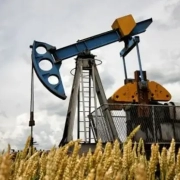

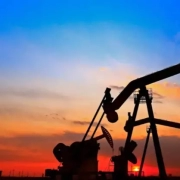
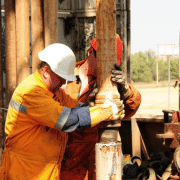
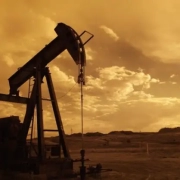



Leave a Reply
Want to join the discussion?Feel free to contribute!